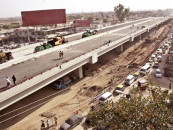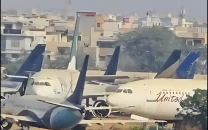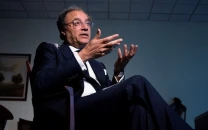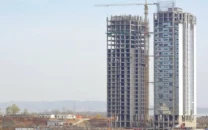Dismantling violent groups
It’s the beginning of a harder battle: containing splinters, managing revenge, preventing their rebirth

Violent groups are difficult to dismantle in limited time and resources. The process is often tedious and full of perils leading to their dispersion and emergence of new groups or sub-groups which can pose fresh challenges to state institutions and law enforcement agencies. Here few things need to be kept in mind to reduce social scattering associated with sudden dismantling of violet groups.
The evolution of violent groups, natural or unnatural, plays an important role in their future progression. Sometimes an available void propels a group into prominence. At times some state institutions support them for their immediate or long-term utility while local administration and LEAs think in a different manner. As a result, police and other law enforcers pay a heavy price at the hands of such violent groups.
On the other hand, if a violent group is formed purely on political grounds to create a significant vote bank, then there are chances that its violent streak may be toned down or kept within a permissible limit over a certain period of time. Such groups come to the fore in quick succession and emerge at critical junctures creating public disturbances. As their utility diminishes, they lose their financial means and therefore try to swim in unchartered waters for survival. Their progression towards violence is tempered by abrupt spikes and they can often be termed as hybrid. They are certainly motivated by ideology and use identity or sectarian platform to reach out to public. Their presence brings an exceedingly divisive force among the polity with gradual swelling of their die-hard supporters and voters. Their rational choice to reach out to external elements can irritate state institutions and hence their dismantling becomes a favored choice of action.
All violent groups act like human organisms and get affected by external or internal environment. These groups become more active during expansion of their networks and strengthening of their links at sub-division and district levels. The imbalance between real and apparent objectives of these groups increases their violent streak. As the gulf between the two increases, the primary tier leadership thinks that they need to look towards other avenues to make their survival and relevance intact. Since these groups are evolved through a controlled manner, they find great enthusiasm in exploring new avenues. Their augmentation brings them street power, financial incentives and political gains as well. Suddenly they start deviating from their real goal in a gradual and incremental way.
The hostile agencies also start focusing on them and try to barter local level disturbances in exchange for financial gains as well. As these groups gain power, they push back local administration and LEAs to make their presence felt in every activity. Their devotees also swell with passage of time and people from different professions join these groups thinking that it may assist them in getting their work done in an effective and speedy manner.
As a violent group gains popularity among the masses, its dismantling becomes complex and problematic. Resultantly, the group may be divided into two or three sub-groups with divergent leadership, thus decreasing its role and power. These factions can dissipate its energy and vote bank as well. A weak leadership may also blunt its violent streak. The most dangerous thing during dismantling is that its members or die-hard supporters may take revenge from individuals at key administrative positions or they can target police and other LEAs indiscriminately.
Such an attitude is typical of young zealots among the rank and file of these groups. They may join hardcore militants operating in the hinterlands or become part of sleeper cells of terror organisations in city districts. The state intelligence set-ups should conduct security audits along with promptly pointing out absent members of the group. There is also an imminent need to conduct psychological profiling of police personnel and members of other LEAs. The more effectively this dispersion is controlled, the more efficiently the surprise attacks by resolute members of violent groups can be reduced. In the end, perpetual vigilance is a serious requirement.















COMMENTS (1)
Comments are moderated and generally will be posted if they are on-topic and not abusive.
For more information, please see our Comments FAQ